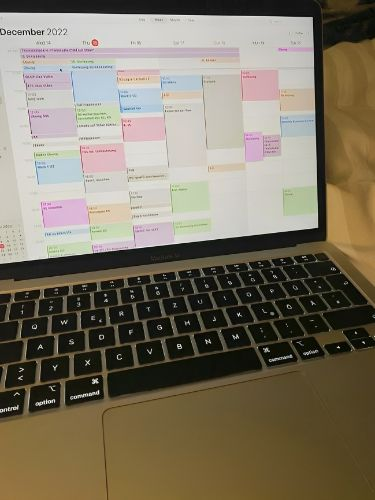Effective Goal Setting Strategies: A Guide to SMART Goals and Action Plans
## Effective Goal Setting Strategies: A Guide to SMART Goals and Action Plans
Setting effective goals is a fundamental component of personal and professional success. By establishing clear objectives, you create a roadmap that guides your actions and decisions. Among the most popular frameworks for goal setting is the SMART criteria, which ensures that your goals are well-defined and achievable. This blog post will delve into SMART goals and provide detailed guidance on creating actionable plans to achieve them.
### Understanding SMART Goals
The SMART framework is an acronym that stands for Specific, Measurable, Achievable, Relevant, and Time-bound. Each element of this framework plays a crucial role in ensuring that your goals are clear and attainable.
1. **Specific**: Goals should be clear and specific, answering the questions of what you want to achieve, why it’s important, who is involved, where it will happen, and which resources are required. For example, instead of saying "I want to get fit," a specific goal would be "I want to run a 5K race."
2. **Measurable**: Incorporate criteria to measure progress toward your goal. This allows you to track your achievements and stay motivated. For instance, "I will track my running distance each week and aim to increase it by 10%."
3. **Achievable**: Your goals should be realistic and attainable. Consider whether you have the necessary resources and capabilities to achieve the goal. A goal like "I will run a marathon next month" may not be achievable if you are just starting out.
4. **Relevant**: Ensure that your goals align with broader life or career objectives. They should matter to you and contribute positively to your overall aspirations. For example, if your long-term goal is to improve your health, then running regularly is relevant.
5. **Time-bound**: Set a deadline for your goals to create urgency and prompt action. A time-bound goal might be "I will run my first 5K race by June 30th."
### Crafting Your SMART Goals
To create your own SMART goals, follow these steps:
1. **Identify Your Objective**: Start with a general idea of what you want to achieve.
2. **Refine It Using SMART Criteria**: Transform your general objective into a SMART goal by ensuring it meets all five criteria.
3. **Write It Down**: Documenting your goals makes them more tangible and increases accountability.
4. **Review Regularly**: Periodically revisit your goals to assess progress and make adjustments as necessary.
### Creating Action Plans for Success
Once you have established your SMART goals, the next step is to create an action plan that outlines the specific steps needed to achieve them. An effective action plan includes several key components:
#### 1. Define Your Goal
Start by clearly stating the goal you want to achieve based on the SMART criteria you've established.
#### 2. Identify Action Steps
Break down your goal into smaller, manageable tasks or action steps that will lead you toward achieving it. For example, if your goal is to run a 5K race, action steps might include:
- Research local races.
- Create a training schedule.
- Join a running group for support.
#### 3. Set Deadlines
Assign deadlines for each action step to keep yourself accountable and maintain momentum.
#### 4. Allocate Resources
Determine what resources (time, money, equipment) are necessary for each action step and ensure they are available.
#### 5. Monitor Progress
Regularly check in on your progress towards completing each action step and achieving your overall goal.
#### 6. Adjust as Needed
Be flexible in adjusting your action plan if obstacles arise or if you find certain steps are not working as planned.
### Example of SMART Goal with an Action Plan
Let’s illustrate this process with an example:
**Goal**: "I want to run a 5K race by June 30th."
- **Specific**: I will participate in a local 5K race.
- **Measurable**: I will track my running distance weekly.
- **Achievable**: I will follow a beginner's training program.
- **Relevant**: Running improves my health and fitness.
- **Time-bound**: The race is scheduled for June 30th.
#### Action Plan Steps:
1. **Research local races** (Deadline: March 15)
2. **Join a running group** (Deadline: March 20)
3. **Follow a training schedule**, starting with three runs per week (Start Date: April 1)
4. **Increase running distance by 10% weekly** (Ongoing)
5. **Participate in the race on June 30**
### Conclusion
Effective goal setting is essential for achieving success in any area of life—be it personal development or professional advancement. By utilizing the SMART criteria, you can create clear and actionable goals that guide your efforts toward meaningful achievements.
Moreover, developing an action plan ensures that you have a structured approach to reaching those goals while allowing for flexibility as circumstances change. Start implementing these strategies today to take significant strides toward realizing your aspirations!
Citations:
[1] https://asana.com/resources/smart-goals
[2] https://www.lucidchart.com/blog/7-steps-to-creating-better-goals
[3] https://www.projectmanager.com/training/make-action-plan
[4] https://corporatefinanceinstitute.com/resources/management/smart-goal/
[5] https://www.nsls.org/goal-setting-techniques
[6] https://extension.psu.edu/the-seven-steps-of-action-planning
[7] https://jamesclear.com/goal-setting
[8] https://asana.com/resources/action-plan
[9] https://www.peoplebox.ai/blog/different-goal-setting-methods/


Comments
Post a Comment